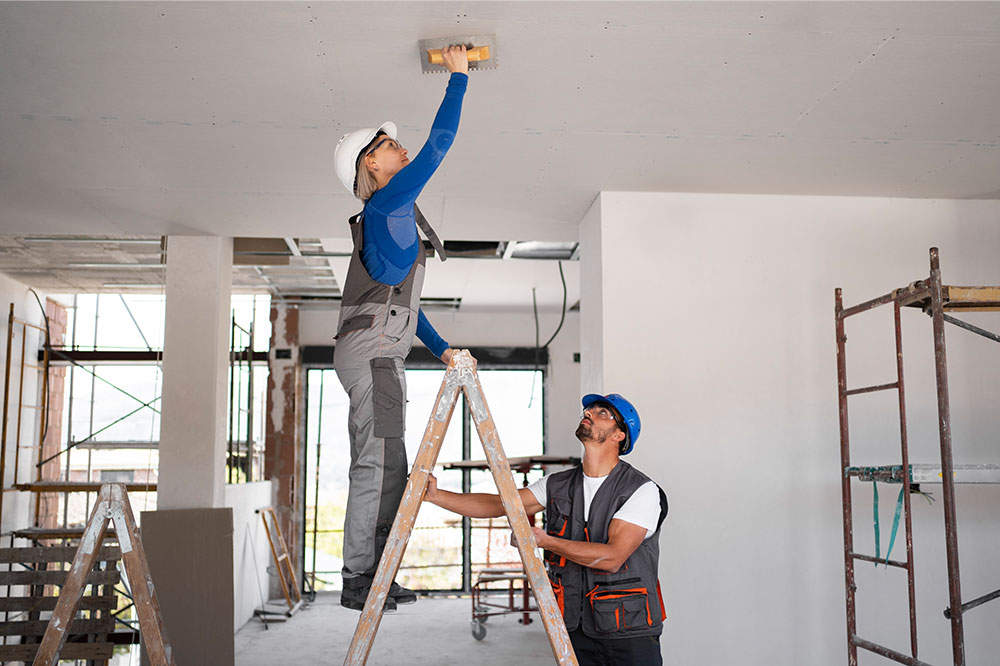12 telltale signs that it’s time for a home renovation

Your home is your prized possession. Over time, it evolves with you. Just like all other aspects of your life, your house also needs love, care, and upkeep to maintain it. But how do you know when you’re ready for a home remodel? From chipping paint to outdated fixtures that no longer serve their purpose, there are several signs around your home telling you that it’s time for an upgrade.
Lack of modern appeal
There are constant developments in the field of home appliances and furniture alike. While you don’t need to keep up with every trend in the market, some things may make your home appear dated and affect its functionality. Old appliances are known to consume more electricity, and old faucets may leak, severely impacting your utility bills. When these aspects of your home begin to impact its efficiency, it is time to undertake a renovation project.
Leaking roof
Many of us believe that a leaking roof is harmless or a project that will consume too much time and energy. However, a leaking roof is one of the most apparent signs that your home is due for renovation. If you’re interested in a low-maintenance roof that is durable and energy-efficient, opt for a metal roof.
If you recently renovated your roofing but are still experiencing leaks, it may be worthwhile to call the agency and perform a roof inspection. Ignoring leaks could lead to bigger problems, such as damaged ceilings or mold growth.
Changing needs
As your family grows and evolves, your house may need to too! Whether you’re just starting a family or about to become empty-nesters, your house may sometimes feel too big or too small. This is a sign that you need a renovation. Look for home improvement services to help you develop a new floor plan to adjust the house to your needs.
Worn-out floors
As you move around the house, wear and tear are bound to occur. It is most frequently noticed in the grouting, especially in the bathroom and kitchen. There may also be cracked, stained, or dented tiles. In some cases, the floorboards may loosen out. All these factors pose a safety hazard to members of the household and are signs that a renovation is due.
Infestations
If you have noticed pests or insects around your home, they are likely burrowing in your gutters, attic space, or other dark corners. These rodents and insects generally infest homes when the materials used are substandard or when the home isn’t regularly cleaned. They are a definite sign that your home needs renovation. In addition to pest control, a remodeling project can help deter their entry into your lovely home.
Old plumbing
Your home’s plumbing system plays a crucial role in transporting waste and water. It’s an essential component that, if faulty or outdated, can lead to significant issues. Since it is difficult to notice leaks in this system, we may not even recognize the need for repairs unless it is in a dire state. However, organizing periodic checks, being aware of any battered pipes around your home, and fixing them promptly can help you avoid long-term damage. Unless you are a professional yourself, leave this job to reliable contractors.
Chipping paint
A neat coat of paint can give your home a new lease of life. Chipping or cracking paint can make your home appear run-down and dated. It may be a result of exposure to sun or chemicals or due to cracks. If you begin to notice it around your home, it may be a good idea to renovate or repaint.
Constant repairs
As a homeowner, it is inevitable to encounter repairs. Nevertheless, if you have to make the same repairs repeatedly, it might be the right time for a renovation. This will allow you to redecorate your home and reduce the cost of recurring repairs, thus helping your home maintain its efficiency.
Damaged exterior cladding
Cladding is the material attached to the exterior of your home to weatherproof it. The type of material that is suitable for your home may vary depending on your location. Some examples of cladding materials include timber, metal, masonry, and fiber cement. Since your home is constantly exposed to external factors such as sun, rain, humidity, wind, and more, this cladding is bound to deteriorate. If you notice any such signs around the walls of your home, it is time to schedule a renovation project.
Cracks in the walls or foundation
Old homes tend to move with time, which may cause cracks in the walls. If these cracks grow, it may indicate a pending renovation project. Surface-level cracks can be easily fixed with esthetic renovations, while structural cracks may require more work.
These cracks may also appear on the external walls or around the foundation. If you notice this damage, schedule a professional inspection to investigate the matter.
Hard-to-open doors
If you live in a particularly humid climate, you will notice that your door frames are beginning to buckle. This makes it difficult to open or close the door completely. It may also loosen the handles and pose safety concerns for you and your family. In such cases, renovating or replacing the doors and door frames may be suitable.
Lack of functional space
Are you beginning to feel frustrated when working within your home? Whether it’s inadequate counter space in the kitchen or insufficient storage space in your wardrobe, some functional needs may also drive up your needs for a home renovation project. Speak to an architect about how you can make changes to your home to make it more comfortable and functional. A remodeled home will complement your style better while improving efficiency as well.
If you want to improve your lifestyle and avoid potential issues, renovating your home is an excellent idea. Additionally, it can increase the market value of your home if you ever decide to sell it.







